Chad sent me a digitized copy of his video record, so that I might do an independent analysis of the event. The target star is very faint, so I co-added all 309 frames to show the field more clearly.
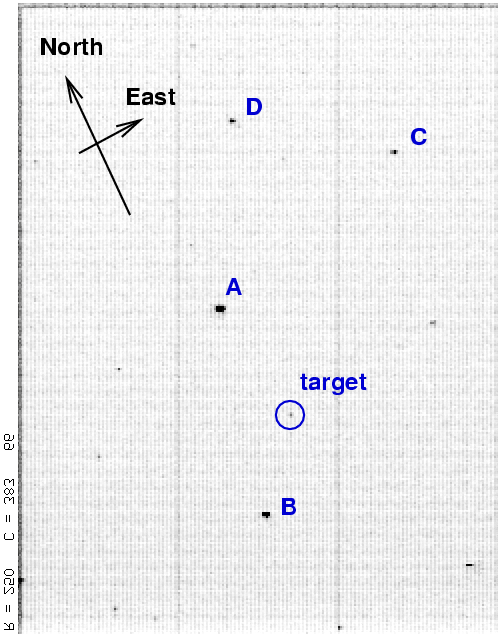
Here's a chart from SIMBAD showing the same field:
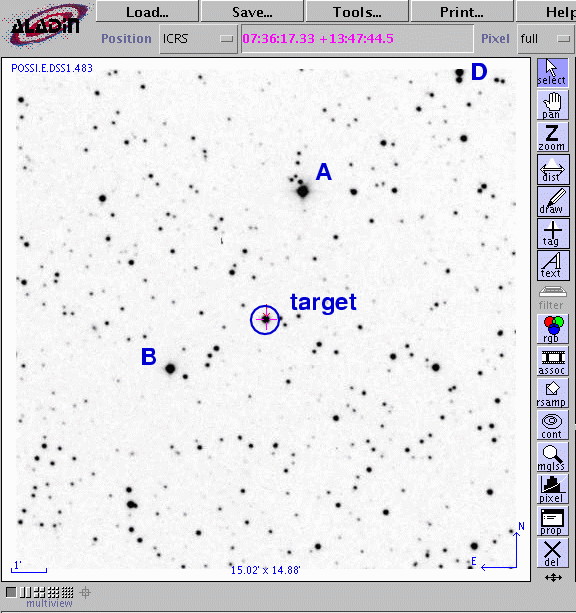
The comparison stars "A" and "B" are in Tycho-2.
star Tycho-2 ID Bt Vt ------------------------------------------------------------------ A 777-1014-1 12.694 +/- 0.242 10.484 +/- 0.048 B 777-1119-1 12.798 +/- 0.260 11.236 +/- 0.089 ------------------------------------------------------------------
The target star was very faintly detected in the original images, so I co-added sets of 10 consecutive frames to improve the signal-to-noise. That means the original 309 frames turn into 30 coadded frames:
original frames turn into coadded frame index
---------------------------------------------------------------
1 - 10 1
11 - 20 2
21 - 30 3
... ...
290 - 300 30
301 - 309 were discarded
---------------------------------------------------------------
Even after adding 10 frames together, the target is still very faint. Below are radial profiles of the bright star A and the target in coadded frame number 1.
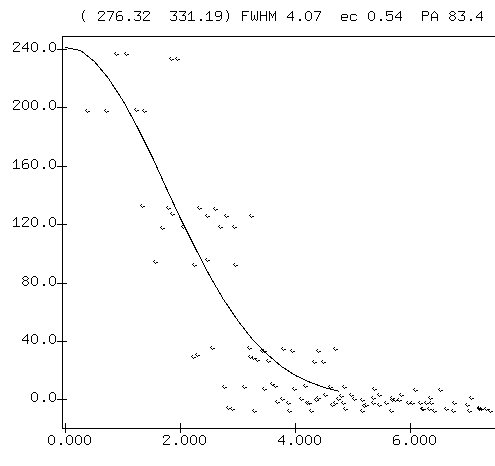
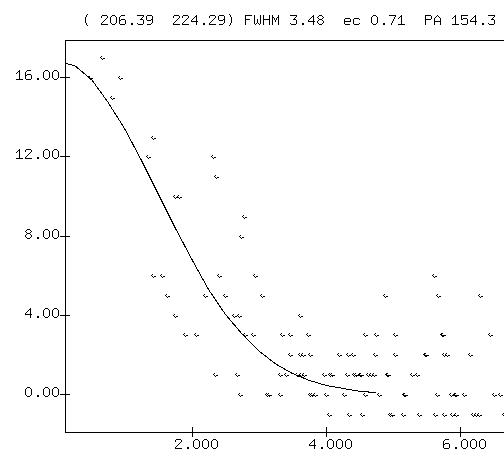
The FWHM of stellar images was between 3 and 4 pixels in the coadded frames.
I followed my usual procedure:
- broke the AVI movie file into individual frames using the MPlayer program
- converted the JPEG frames into 16-bit integer FITS files
- analyzed the FITS images with programs from the
XVista astronomical image processing package
- found the centroid of the bright stars "A" and "B" in each frame, and used a fixed offset from "A" to calculate the position of the target
- measured the light from each star using circular apertures of radius 2, 3, 4 pixels,
- subtracted background via a sky annulus of radii 10 to 20 pixels
I decided that the 4-pixel radius yielded the best results, but I'll show the light curves using each of the three radii below. To start, I'll use a linear scale in integrated light intensity.
First, using a 2-pixel aperture,
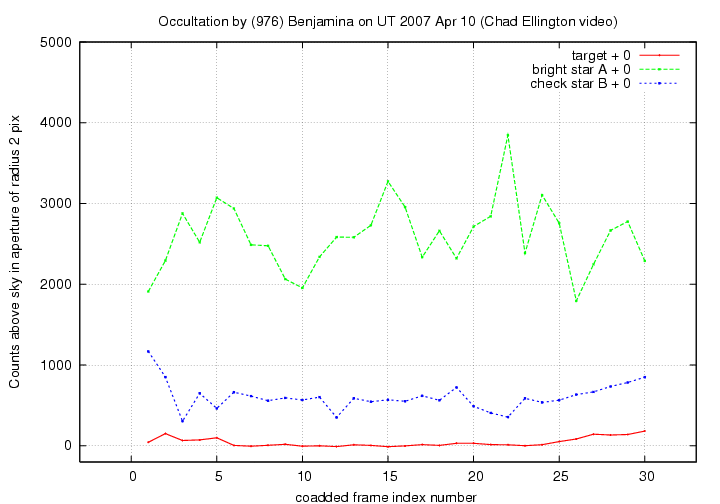
Next, using a 3-pixel aperture,
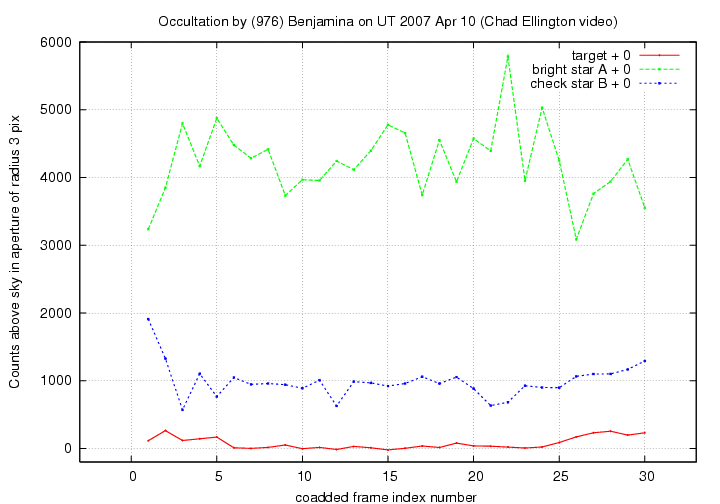
Finally, using a 4-pixel aperture,
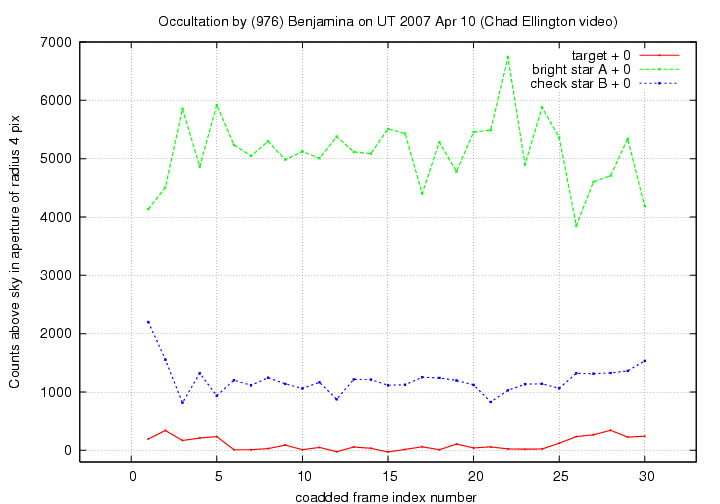
Now let's look at a closeup of the target star. I'll continue to use a 4-pixel aperture, and zoom in on low light levels.
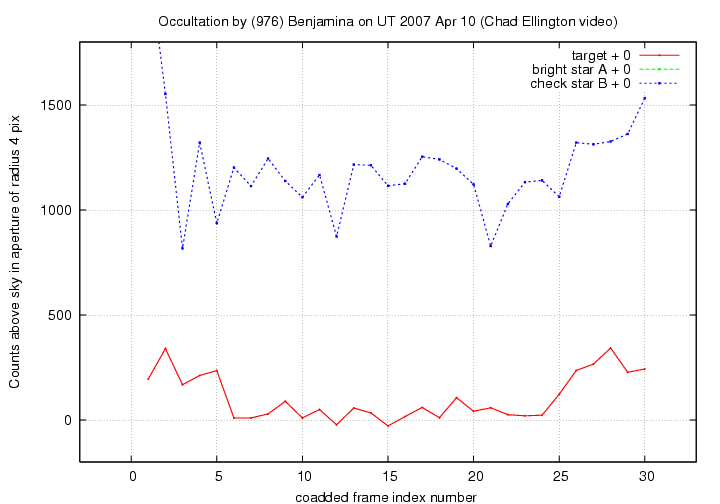
It seems pretty clear that the target star's light decreases to (effectively) zero from around frame 6 to around frame 24 or 25.
I think one sees the event more clearly if one converts the integrated light values to a magnitude scale. I adopted an instrumental magnitude scale
instr. "mag" = 25.0 - 2.5 * log10( integrated counts above sky)In two of the 30 measurements, the target star's integrated light was slightly negative; I replaced the negative values by positive 1.0 to allow me to compute a "mag". Here are the light curves in magnitude form:
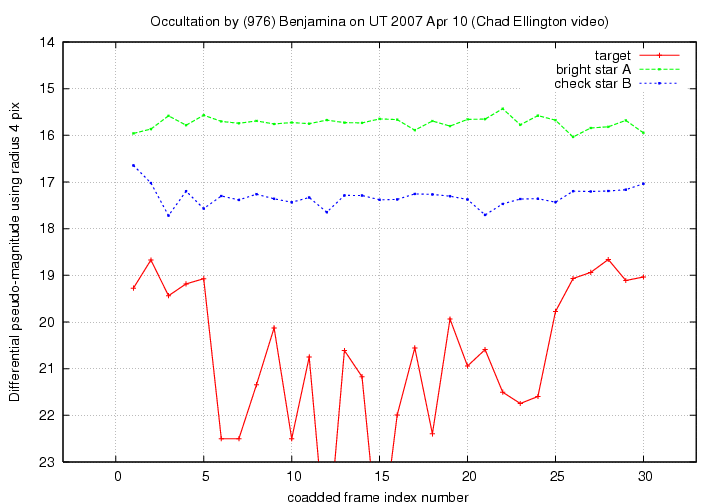
Again, I see strong evidence for an occultation lasting roughly 19 co-added frames, or 190 original frames. At a standard video rate of 30 frames per second, that corresponds to a duration between 6 and 6.7 seconds. I'll leave it to Chad and others to decide how best to derive a more precise duration.
-
Data file with my photometric measurements
Col quantity ---------------------------------------------------------------------- 1 coadded frame index 2, 4, 6 counts above sky for star A in aper radius 2, 3, 4 8, 10, 12 counts above sky for star B in aper radius 2, 3, 4 14, 16, 18 counts above sky for target star in aper radius 2, 3, 4 ----------------------------------------------------------------------
For more information
- Steve Preston's prediction for this event
- One of Chad Ellington's posts to the Yahoo IOTA Occultations group describing this event and some of his analysis.